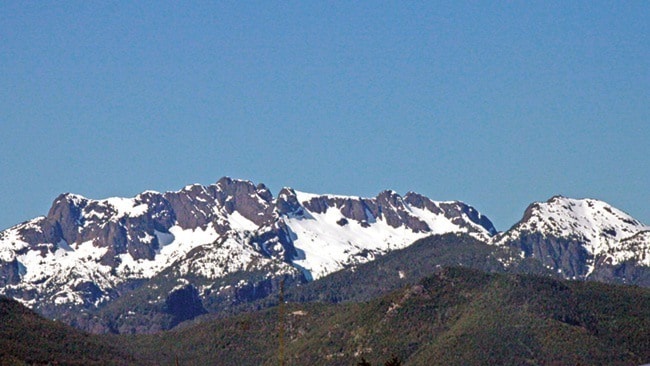Despite the cool wet weekend, snowpacks on Vancouver Island are very low, and burning restrictions are starting.
Stations across the province measured a record-low snowpack at 53 per cent of the average for May 1, according to the B.C. River Forecast Centre.
And while much of Vancouver Island is a little better — at 70 per cent of the average since 1980 — the Parksville Qualicum Beach area's only official mountaintop measurement on Mount Cokely (beside Mount Arrowsmith), is registering 12 per cent.
"The May 1 snow conditions are more typical of those observed in a normal June 1 period, indicating that snow melt this season is three to four weeks ahead of normal," said Dave Campbell, head of the B.C. River Forecast Centre.
Other stations in the mid-Island ranged from 22 to 92 per cent of normal.
With temperatures above normal through April, more snow melted leading to higher than normal river flows in April, leaving less water available and low flows expected over the next couple months, Campbell said.
"Snowmelt runoff that typically flows later in the season has already passed through their watersheds." He said the strong recent El Niño conditions are now declining, and forecasters expect a warmer than usual summer, though they also say long-term forecasting is harder with the less stable conditions.
"Current weather forecasts for the next two weeks suggest cooler temperatures with rainfall in some locations through the short-term, and warm weather emerging through the middle of the month," Campbell said.
He said low snowpacks lead to low river flows which hurt local water supply and animals like fish which rely on the stable river conditions.
The dry conditions have led to the B.C. Wildfire Service starting a Category 2 burning ban as of May 13, “A couple weeks earlier than usual,” said Donna MacPherson, Fire Information Officer for the Coastal Fire Centre.
Contrary to fears of a campfire ban, Category 2 covers large fires like slash-burning piles over two metres high or three metres wide, burning grass over an area larger than 2,000 sq.m or things like fireworks and burning barrels.
The prohibition dose not ban campfires or cooking stoves.
MacPherson said the ban is based on fire danger, based on the dryness of the soil, which is considered moderate in the Parksville area and high down the southeast side of the Island.
She said the higher amount of precipitation over the winter means we are not in the official drought of last summer, but a lot will depend on June.
MacPherson said June is usually a relatively cooler dryer summer month, but the heat last summer caused a lot of problems.
While there would normally have been 14 human caused fires by this time of the fire season in the Coastal Fire Zone — which includes the Island and south coast — there have already been 22 this year, MacPherson said.
The early wildfire season has caused alarm already, with dozens of major fires already recorded across the northern part of the province.
Premier Christy Clark sent out a special early reminder to be careful after 34 wildfires started on a single day in the Peace River region in late April.
“The wildfires in the Peace and across Northern B.C. are a grim reminder that fire season is starting earlier and earlier. Everyone needs to understand the importance of reducing wildfire risks around their homes and in their communities,” she said in news release.
For more on the the fire conditions check http://bcwildfire.ca, for more on the water supply visit http://bcrfc.env.gov.bc.ca/bulletins/
